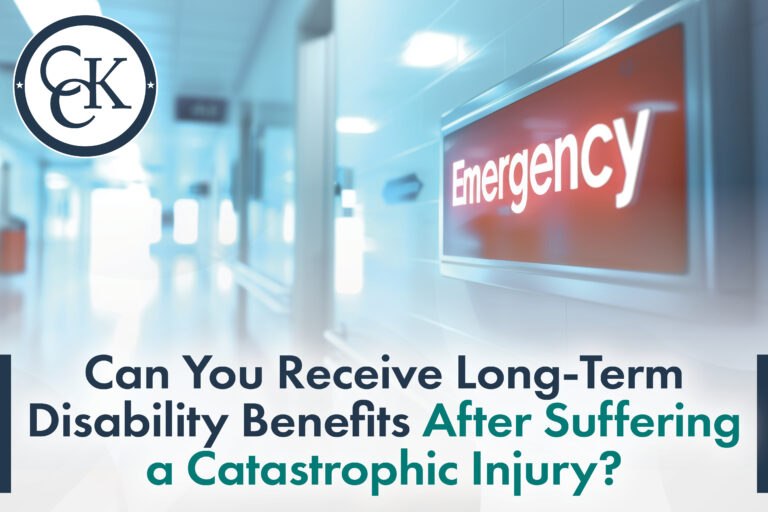Can You Receive Long-Term Disability Benefits After Suffering a Catastrophic Injury?

Long-term disability (LTD) benefits can protect a percentage of a person’s pre-disability earnings if they become unable to work. Typically, this amount is between 60 and 80 percent. However, many articles online only discuss medical conditions that may qualify for such benefits. What happens if you suffer from a catastrophic injury?
Since LTD benefits are meant to protect a person’s income when they are unable to work for an extended period, then it is possible to receive them for a catastrophic injury. This article will discuss how a person who suffers a catastrophic injury can qualify for long-term disability benefits.
What Is a “Catastrophic” Injury?
It is important to define what a “catastrophic injury” is. In short, this is a serious type of injury that typically results in permanent damage. It may result from an accident, such as a severe car crash.
For example, a traumatic brain injury (TBI) is a type of injury that could be catastrophic and qualify for LTD benefits. A TBI is when the brain suffers trauma. This is usually due to a bump, jolt, or blow to the head. However, if something were to pierce the skull and directly injure the brain, then this can also result in a TBI.
While some TBIs are more serious than others, they can be a long-lasting condition that drastically alters a person’s cognitive and physical functionality. When a person’s cognitive and physical abilities diminish, then working can be challenging—if they can work at all.
Other examples of catastrophic injuries include:
- Organ damage
- Spinal cord injuries
- Amputation
- Severe burns
An injury can qualify for long-term disability benefits. However, a claimant must be able to prove that their injury meets the definition of disability within their policy.

Depending on the person’s LTD insurance policy, this definition may either be an:
- Any Occupation Definition: The injury disables the claimant from working in any job whatsoever, regardless of its relation to their current job, OR
- Own Occupation Definition: The injury disables the claimant from working in their own occupation, as it is defined in the national economy.
Establishing a Long-Term Disability Claim Based on a Catastrophic Injury
Establishing a claim based on a catastrophic injury entails gathering and submitting evidence. This evidence must show that the catastrophic injury renders you disabled under the applicable definition of disability in your policy.
Evidence that long-term disability claimants can collect and submit to prove their disability may include:
- Medical records
- Vocational evaluations
- Functional capacity evaluations
- Neuropsychological evaluations
- Detailed doctor reports
- Third-party medical evaluations
- Symptom journals
- Witness statements
- And more
What Is a “Catastrophic Disability Benefit” Rider?
While not typically present, a person may have a “catastrophic disability benefit rider” in their LTD policy. This rider is typically present in individual policies (i.e., a policy that a person buys directly from an insurance company). However, it could be present in any type of policy.
This rider can increase the monthly LTD benefits a claimant receives if their disability is due to a catastrophic injury. To receive this increase in monthly benefits, the person must prove they meet the specific definition of catastrophic injury in their policy (often, this means they must demonstrate that they are unable to perform two daily activities without the help of another person).
Call CCK Law Today for a Free Case Evaluation
Unfortunately, insurance companies deny many long-term disability claims, even for catastrophic injuries. These companies frequently use biased tactics to help delay and deny these claims. However, all claimants have the right to file an appeal for their benefits.
Whether you have an individual policy or an ERISA-governed policy, CCK Law may be able to help. Since 1999, we’ve been helping LTD claimants get the benefits they need. We understand how these insurance companies operate. Call us today at (800) 544-9144 for a free case evaluation with a member of our team. We will analyze your case and determine if we can assist you.
About the Author
Share this Post
